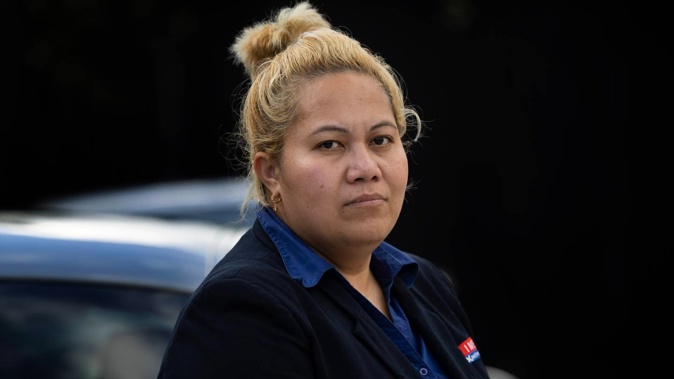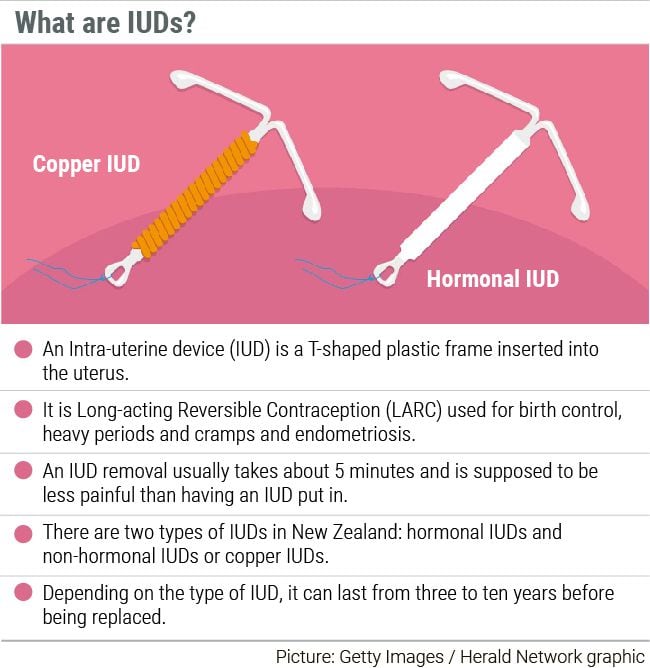
A woman underwent three excruciating procedures in just one day and was sent home bleeding without answers in what she described as an “emotional roller coaster”.
South Auckland woman Lagitoa, who did not want her last name used, went to her GP at Local Doctors Otahuhu on a regular Wednesday after having persistent lower back and stomach pain.
Her family GP agreed with her that it could be her IUD causing the symptoms and it would be a good time to remove it.
“She [the GP] said, ‘I can do it right now, just go to the counter and pay more money and come back and give me the receipt, and I’ll do it right away’.”
The 36-year-old had already paid for her appointment prior to receiving it, and now her GP was asking her to pay for her procedure before it was done.
“I was surprised when we went in the room, she said to me, ‘oh it has been a while since I did this procedure, so just bear with me, also I’m letting you know that it is a risky procedure’.
“She said to me, ‘oh if I don’t complete the procedure ... then I might transfer you [to another doctor or clinic]’.”
On reflection, Lagitoa said she feels like the GP already knew she wasn’t going to be able to do the procedure, despite making her pay before completing it.
“I was already in pain and I said to her, ‘Is there a way you can numb me?’ and she said, ‘no, it should be okay, you should be fine’.
“And I said, ‘No I’m not fine, it’s painful.’
“Then she said, ‘Oh snap, something went wrong’.”
The GP held up the strings used to remove the IUD, showing Lagitoa they had become detached from the device inside her and were covered in blood.
She wasn’t bleeding or menstruating before the procedure.
“I said, ‘Okay, what’s wrong?’ and she said, ‘Oh I didn’t remove the whole of the IUD because of lack of tools’.”
The GP abruptly left the room, leaving Lagitoa sitting on the operating bed contemplating what had just happened to her.

“She came in and she said told me to get dressed. She didn’t even give me a minute to maybe sit down.”
The GP advised Lagitoa she had referred her to another GP, Local Doctors Otara, to have the procedure finished on the same day.
But at the Otara clinic, an almost exact repeat of what had happened at Otahuhu would occur and the GP told Lagitoa once again that he could not complete the operation because of a lack of tools.
Lagitoa’s partner described his anguish helplessly watching her yell in pain as she bled profusely in the clinic.
“He’s done it wrong again ... and I said, ‘man, how can people do this?’,” her partner said.
“I was crying, it was so painful I can’t even explain,” Lagitoa said.
The GP advised Lagitoa to go home and take painkillers, where she would then have to wait four to five weeks for another clinic to call her to complete the unfinished procedure.
“He said, ‘There’s nothing I can do’.
“The way he spoke to me, he was not concerned about what was going on, and the fact that he just let us go just like that instead of saying sorry.”
Tamaki Health, the privately owned healthcare group which oversees both Local Doctors Otara and Otahuhu, refused to comment on the failed treatment Lagitoa received at either clinic.
Feeling weak and dizzy, she called Healthline, which advised her and her partner to go to Middlemore Hospital immediately.
Lagitoa arrived at the hospital about 3.30pm and would not be seen by a doctor until 2.30am.
“What I was expecting was that it was an emergency matter, so they should refer me straight away to a doctor that could handle my situation.”
After 11 hours in the waiting room, she was still bleeding and in pain, having to frequently go to the bathroom to replace her sanitary pads, which she was running out of.
/cloudfront-ap-southeast-2.images.arcpublishing.com/nzme/VXJIR5RGVJGT3B5OBAIIT5LF4M.jpg)
Lagitoa feels physically and emotionally traumatised by the medical procedures she went through to try remove her IUD. Photo / Mike Scott
When she was eventually seen by the hospital doctor, he told Lagitoa his notes said she was there because of stomach pain.
“I said, ‘Man, I’m not here for some tummy pain, I’m here because two doctors weren’t able to finish removing the IUD from me’.
“He was shocked.”
He quickly sent her to the hospital’s gynaecology team, which once again was unable to remove the IUD.
“I was crying hard because it was really painful,” Lagitoa said.
Lagitoa was told she would need a hysteroscopy, a camera on a tube inserted into the vagina, to help see where the IUD was inside her.
The hospital wouldn’t do the scan immediately and now, a week after visiting the hospital, Lagitoa is still waiting to know when she will be able to get a scan. She wasn’t given a time frame of when she would be seen.
“It is really stuck in my mind ... I’m not comfortable at all, even sitting here at this time I can feel [the IUD] moving.”
A Te Whatu Ora Health New Zealand spokesperson said they wouldn’t discuss Lagitoa’s patient care for privacy reasons, but provided some “context”.
“When an IUD has been left in longer than recommended, it is not unusual to have difficulty to remove an IUD, especially if a patient presents with the IUD’s retrieval strings having been broken.
“It is important to note that the correct treatment plan was followed in this instance, and we are satisfied an appropriate level of care was provided. A referral to a specialist clinic is the correct course of action in these cases and the patient is now on the waiting list to have the IUD removed.”
Lagitoa said she was not told by any medical staff that her IUD had been in for too long. She originally got the IUD inserted nine years ago in Auckland, and her GP at the time told her it would last up to 10 years.
The spokesperson said the situation was not considered an emergency as Lagitoa was “not in any danger and it is not something for which a person would be admitted to hospital”.
Following her traumatising experience, Lagitoa took to social media to warn others and was shocked at the number of women who responded to her with similar stories.
Lagitoa said she was telling her story so people, particularly Pasifika women like herself, feel confident to stand up for their own health and communicate their needs.
“This is about people’s lives.”
Women’s Health Action general manager Isis McKay said there were long-standing systemic issues related to women’s health in Aotearoa, including contraception.
“Unfortunately, this is not an uncommon story, although these issues tend to get brushed under the rug,” McKay said.
A massive shortage of training supervisors was hampering efforts to teach doctors and nurses how to properly insert IUD contraceptives, RNZ reported in March.
Only eight out of 300 practitioners were able to finish a course on how to insert intra-uterine devices because there were not enough trainers to take them through the practical component.
People were often told what to expect for insertion, but not how to have the device removed, who could do this for them, and what side effects they might experience after removal, Mckay said.
“Despite efforts being made to shift away from a paternalistic ‘doctor knows best approach,’ we know that many women report having their concerns relating to contraceptive side effects and pain dismissed.”
Power imbalances between healthcare providers and patients make many women feel as though they have limited choices or are pressured into taking LARC, a recent New Zealand study found.
McKay noted it is the responsibility of healthcare practitioners to communicate with patients about the potential complications and side effects of LARC, including their insertion and removal before the procedures are performed.
The normalisation of women’s pain during menstruation as well as a paternalistic view towards pregnancy prevention can result in health providers dismissing women’s concerns around contraception.
“We find that many people adopt a ‘grin and bear it’ approach, and when they do finally reach out for help, people are often left feeling ignored, not taken seriously, and told ‘give it a bit longer,” McKay said.
Last year, ACC received 51 claims relating to IUDs - 22 related to perforation.
Where to go when it goes wrong
If someone has concerns about their IUD procedure, they can lodge a complaint with the Health and Disability Commissioner (0800 11 22 33).
If they have concerns over an injury caused by IUD insertion or removal by a registered health professional, they can make a claim through ACC (0800 101 996).
Take your Radio, Podcasts and Music with you









